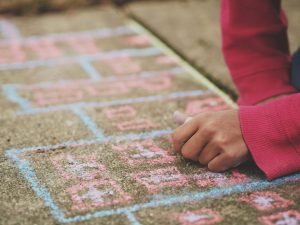Culturally Responsive Teaching: Embracing Diversity in Lessons
In today’s increasingly diverse society, it is more important than ever for educators to embrace and celebrate diversity in their lessons. This is where Culturally Responsive Teaching (CRT) comes into play. With its focus on acknowledging and valuing the cultural backgrounds and experiences of students, CRT helps create a supportive and inclusive learning environment for all students. In this article, we will delve into what exactly CRT is and how educators can incorporate it into their teaching to promote greater cultural understanding and appreciation among their students.
Understanding Culturally Responsive Teaching
So what exactly is Culturally Responsive Teaching? At its core, CRT is an approach that recognizes the diverse cultural backgrounds of students and aims to incorporate this diversity into education. The concept was first introduced by Dr. Gloria Ladson-Billings in 1994 and has since gained widespread acceptance in the education community.
CRT is more than just simply providing a diverse range of materials and resources in the classroom. It involves actively engaging with students’ unique cultural perspectives and experiences and using this knowledge to inform and enhance the learning process. This not only promotes a deeper understanding of different cultures but also helps students feel valued and included in the classroom.
The Importance of Embracing Diversity in Lessons
Every student comes from a different cultural background, and as educators, it is essential to recognize and celebrate this diversity. Not only does this help students feel more connected and engaged in the learning process, but it also prepares them for the diverse world they will navigate as adults.
CRT helps students understand that their culture is not something to be ignored or ashamed of, but rather something to be embraced and celebrated. By incorporating diverse perspectives into lessons, teachers can create a more inclusive learning environment that honors the different strengths and experiences of each student.
Strategies for Incorporating CRT in Lessons
Integrating CRT into lessons may seem intimidating at first, particularly if you are used to a more traditional teaching approach. But incorporating CRT doesn’t have to be a complete overhaul of your teaching style. Here are a few strategies you can use to embrace diversity in your lessons:
1. Get to Know Your Students
The first step in incorporating CRT in lessons is to get to know your students on a deeper level. Take the time to understand their backgrounds, cultural traditions, and experiences. This will help you tailor your lessons to their needs and interests, making the learning process more meaningful for them.
2. Use Culturally Relevant Materials
Ensuring that the materials used in lessons reflect the diverse cultural backgrounds of your students is a crucial aspect of CRT. This can include incorporating literature, music, art, and other resources that represent different cultures. By doing so, students can see themselves reflected in the classroom and feel more engaged in the learning process.
3. Encourage Dialogue and Discussion
CRT also involves creating a safe space for students to share their cultural perspectives and experiences. As a teacher, it is important to facilitate dialogue and discussions that promote cultural understanding and mutual respect among students.
4. Embrace Differences
Lastly, it’s essential to understand that CRT is not about trying to make everyone conform to a single cultural norm. It’s about acknowledging and embracing the differences that make us unique. By encouraging students to embrace their cultural identities, you are fostering a more accepting and inclusive learning environment.
In Conclusion
Culturally Responsive Teaching is a powerful tool for promoting diversity and inclusion in the classroom. By incorporating different cultural perspectives and experiences into lessons, teachers can create a more engaging and meaningful learning experience for their students. Embracing diversity in lessons not only benefits students but also prepares them to be more culturally aware and compassionate citizens of the world.
So, let us all commit to embracing diversity and fostering an inclusive learning environment through CRT. As educators, we have the power to shape the minds and perspectives of future generations, and it is our responsibility to do so in a way that celebrates and values diversity.









